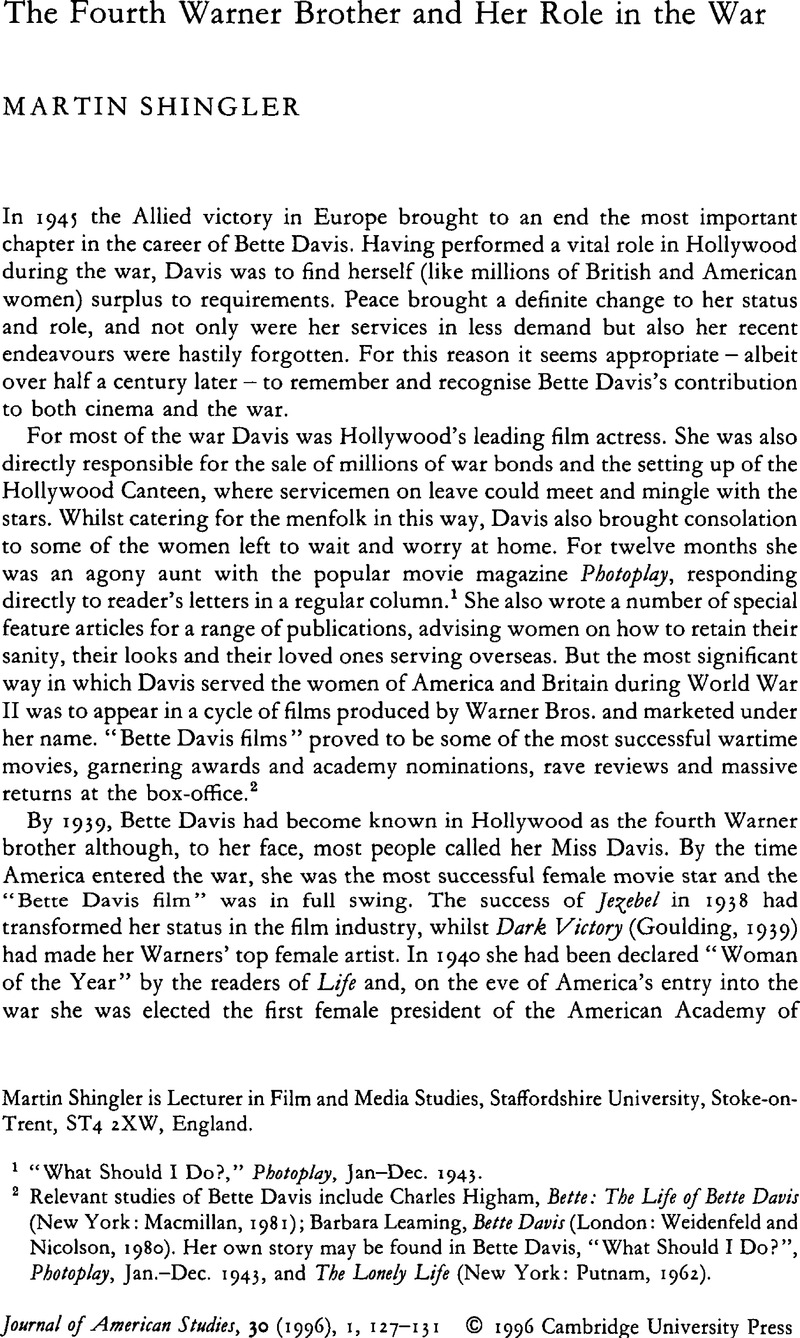Article contents
The Fourth Warner Brother and Her Role in the War
Published online by Cambridge University Press: 16 January 2009
Abstract

- Type
- Notes and Comment
- Information
- Copyright
- Copyright © Cambridge University Press 1996
References
1 “What Should I Do?,” Photoplay, 01–12 1943Google Scholar.
2 Relevant studies of Bette Davis include Higham, Charles, Bette: The Life of Bette Davis (New York: Macmillan, 1981)Google Scholar; Learning, Barbara, Bette Davis (London: Weidenfeld and Nicolson, 1980)Google Scholar. Her own story may be found in Davis, Bette, “What Should I Do?”, Photoplay, 01–12 1943Google Scholar, and The Lonely Life (New York: Putnam, 1962)Google Scholar.
3 American Institute of Public Opinion and Scholarly Resources, Gallup Looks at the Movies: Audience Research Reports, 1940–1950 (Princeton: American Research Institute, 1979)Google Scholar.
4 See Klaprat, Cathy, “The Star as a Marketing Strategy: Bette Davis in Another Light,” in Balio, Tino, ed., The American Film Industary (Madison: University of Wisconsin Press, 1985)Google Scholar.
5 Rupp, Leila J., Mobilizing Women for War: German and American Propaganda, 1939–1945 (Princeton: Princeton University Press, 1978)Google Scholar.
- 3
- Cited by




